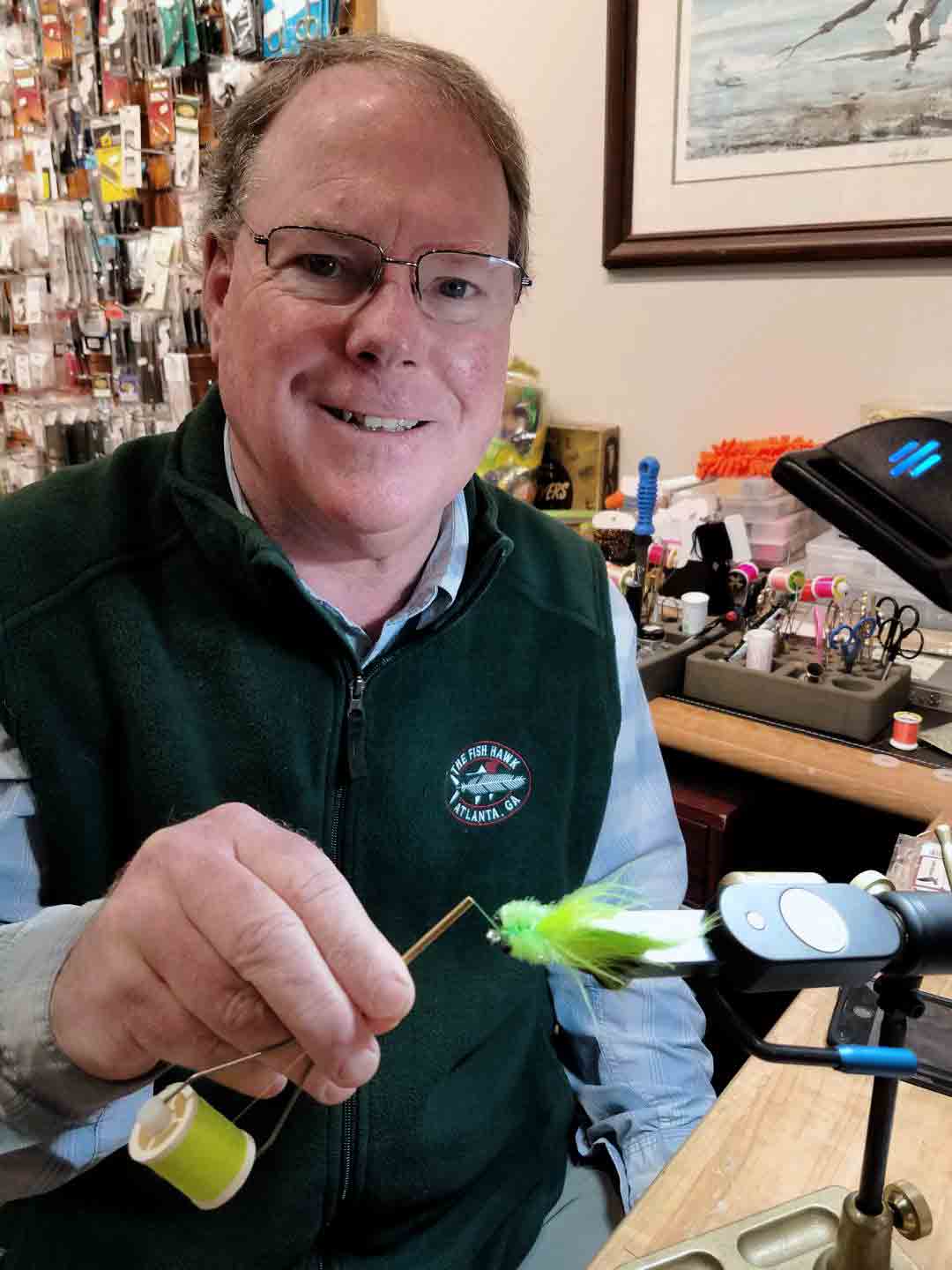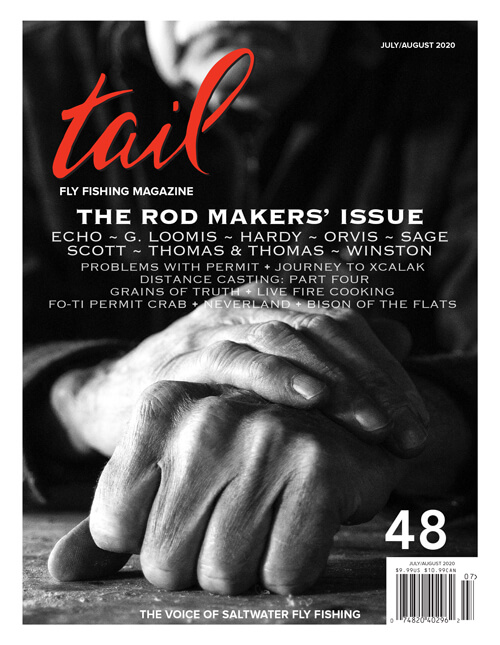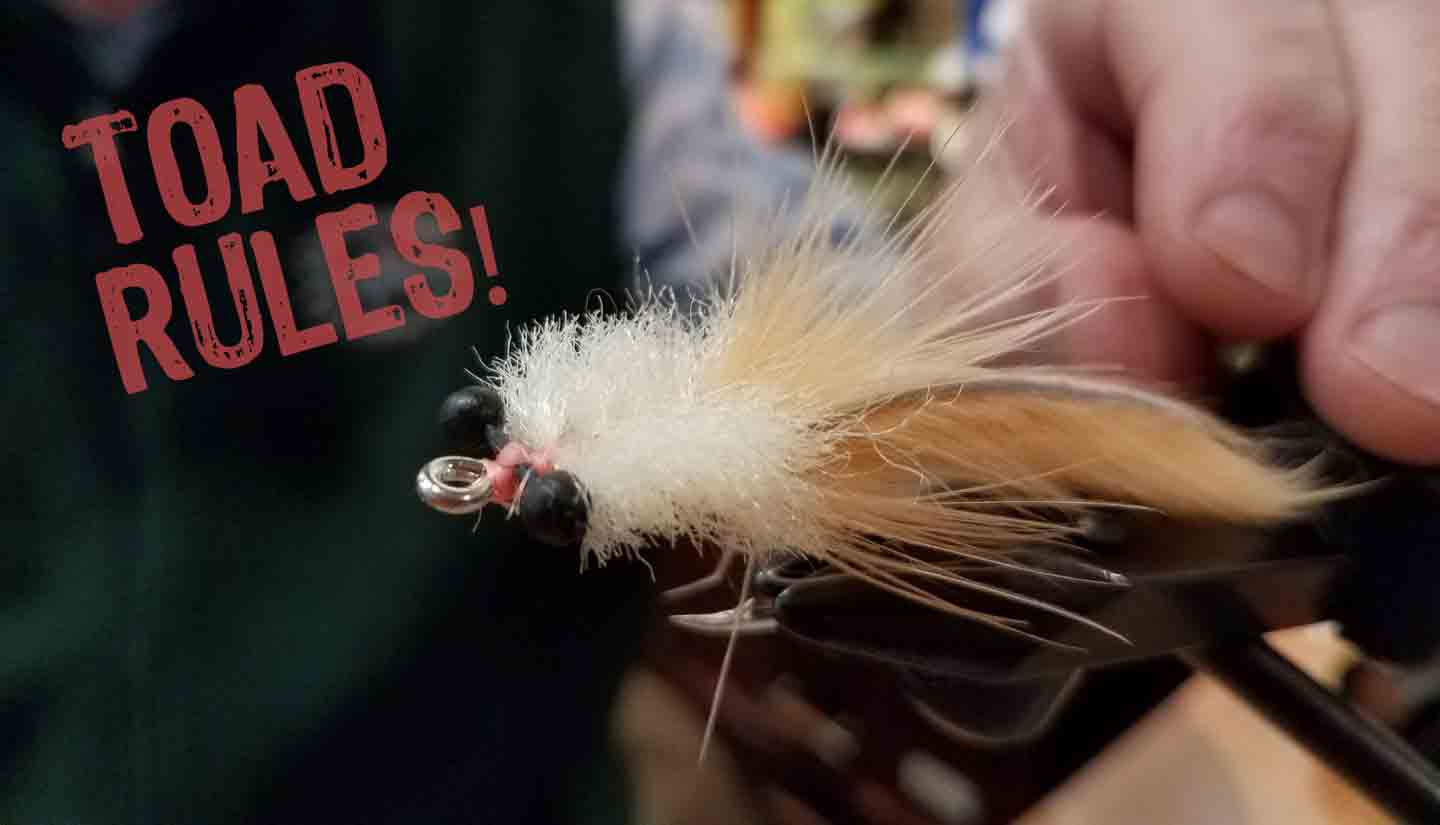Jin Chan is translated literally from Chinese as the Golden Toad.
It is commonly translated as the Money Toad because it represents a popular Feng Shui charm used to encourage prosperity in many Chinese homes and businesses. This mythical creature is said to appear during the full moon, near houses (or businesses) that will soon receive good news. The nature of this good news is universally understood to be wealth. In the Florida Keys, wealth is measured in silver.
I’m quite sure that an avid angler from Georgia didn’t realize a connection to this ancient Chinese folklore, but his Golden Toad has many similarities. It, too, brings great prosperity around the full moons of spring in the Florida Keys. One of the beneficiaries of the Toad was his friend and fellow fly angler Andy Mill, who used it as his secret weapon, winning at least five tournaments with it in the mid-1990s.
How and when did this lucky charm come to be? Who would know better than the man who created it, Gary Merriman…?
Asking what year the Tarpon Toad was created should have been a soft lob to break the ice with the creator, but Merriman responded with, “I can tell you where, how, and why it was made, but I just don’t remember what year it was–not with certainty, anyway.”
Merriman punted on the very first question, indicating this was going to be a long day. But after a quick call to his friend Ron Winters, he confirmed that the Tarpon Toad was created in Loggerhead Basin in the Florida Keys during the spring of 1993.
It’s well-known that Loggerhead Basin tarpon can be fickle. I believe he called them assholes, but after fishing them for over 30 years, he knows them well and is entitled to do so.
Merriman and Winters were trying some new patterns to entice this particularly difficult assembly to eat. One of the things that Merriman noticed was that patterns of the day would sometimes spin or rise and fall with a strip and stop. While the rise and fall can be very productive, with these tarpon it simply wasn’t.
Merriman was trying to make a fly that would have neutral buoyancy and would hover below the water’s surface and move in a straight line when stripped. After studying a few patterns, he noticed what he called “wings” on a Harry Spears pattern called the Tasty Toad. This pattern had splayed hackle and a bushy, rounded body.
Merriman adopted this concept for his “wings” and created a flat-headed pattern with a bunny tail and marabou collar. He and Winters tested it the next day.
Despite Merriman’s blowing his first presentation by about 10 feet, he did get the eat. The tarpon raced to this fly as he had never seen before. Not just this fish, but nearly every fish he presented to ate this fly. It wasn’t just a magical moment or a magical day, either. This anomaly went on for days, weeks, and months and became typical behavior in lieu of their former asshole status. Merriman’s Tarpon Toad was surely destined for greatness.
After being successful with the Toad in Loggerhead Basin during that week in 1993, Merriman attempted to share the fly with guide Tim Hoover, who said, “I don’t know what that is but you’re not fishing it on my boat.”
It would be years before Hoover tried the fly, and only then because he heard an over-zealous Winters screaming “Toad rules!” every time he hooked up.
“What does that mean?” he asked Winters, who eventually shared that this pattern, which Hoover had rejected years before, was the secret sauce for both backcountry and oceanside tarpon in the Keys.
There are two basic variations of the Toad–one with a marabou tail and one with a bunny tail–in many color variations. The original was tied with a chartreuse bunny tail upside down on the hook. It had a chartreuse marabou collar and a yellow/cream head made from floating poly yarn. He tied it with plastic eyes and also weighted eyes, both of which worked depending on the water depth. All color combinations are commercially available today, the most popular being chartreuse/yellow/cream, black/purple, and black/red. Merriman also speaks fondly of a peach version: a peach bunny tail with a lighter peach collar and a yellow/cream head.
The marabou version was first tied by Tim Hoover; Merriman confesses this is his go-to fly for oceanside tarpon. Because of the natural undulation of the marabou, this version works better, he says, with less movement than you would impart to the fly when fishing it in the backcountry. This one has the same marabou collar and floating poly yarn head.
Merriman states that the marabou version was an experiment by Hoover after he had run out of rabbit strips and didn’t want to drive to the fly shop. Fortunately, it was equally productive as the bunny strip version.
According to Merriman, the commercially available version are usually tied correctly; however, he notes that the original proportions are key to the pattern’s success. In some commercial ties, the head is too thick and bushy, which minimizes functionality. The foam-headed versions have never been productive for Merriman and he does not recommend them.
The original Tarpon Toad was 2.25 to 2.5 inches in length total.
The head portion is roughly 1/3 of the total length and usually consists of five poly yarn sections and includes the plastic eyes.
The tail section is about 1.25 to 1.5 inches from the base of the head and includes the collar and tail. The tail is measured from the extension of the rabbit fur and not where the cut is on the actual strip.
No foul guard is necessary if you follow the recipe because the dimensions used in this original recipe will not foul as much (this also depends on the quality of the cast).
Despite Merriman’s not remembering the actual year the Tarpon Toad was created, he seems to have remembered everything else and was kind enough to share his original recipe with us—something Colonel Sanders has yet to do.
Gary Merriman has been a committed fly anlger for most of his life. He owns the Fish Hawk, Atlanta’s premier fly shop, where he still provides expert advice to his customers. When he’s not fishing for tarpon, you can find him trout fishing on local streams or at the vise in his office tying up a Toad or two.
by Joseph Ballarini
 SUBSCRIBE TO TAIL FLY FISHING MAGAZINE
SUBSCRIBE TO TAIL FLY FISHING MAGAZINE
More posts on tarpon:


